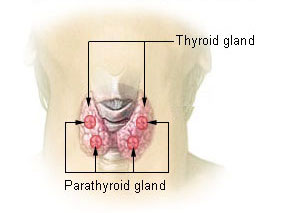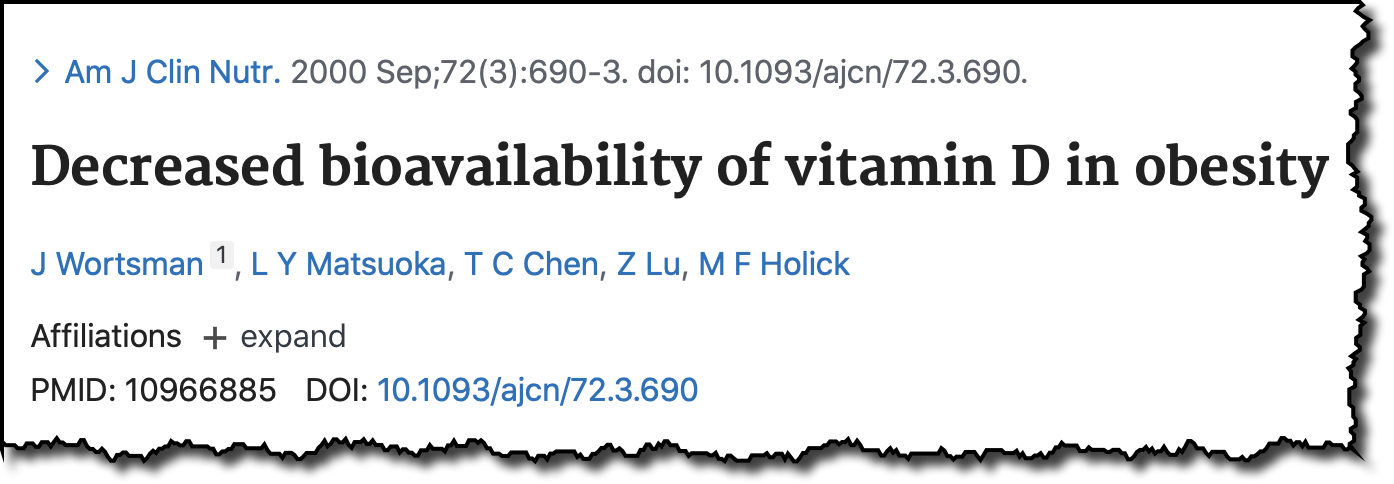
They say the otherwise
Unsubscribe | Report as spam | Change email preferences
It starts with Parathyroid hormone — despite the familiar name, and the anatomical proximity…
…the parathyroid glands (which produce parathyroid hormone), have a completely different role than the more familiar thyroid gland.
Parathyroid hormone (PTH) is best known for its calcium and phosphate regulating functions.
In simple terms, parathyroid hormone is secreted by the parathyroid glands in response to low serum calcium levels.
In essence, PTH regulates calcium levels by “leaching” calcium from the bones to compensate for the insufficient plasma levels, restoring proper calcium levels.
However, if parathyroid function remains chronically elevated, this can cause excess serum calcium levels (hypercalcaemia),
Hypercalcaemia is implicated in the process of soft-tissue calcification (Martin, 1986).
But interestingly enough, the more calcium you take in your diet, the less calcium builds up in your bloodstream and the stronger your bones and the higher testosterone.
This process of hypercalcaemia is from inadequate calcium and vitamin D levels — and it can affect the kidneys, arteries, blood vessels, leading to a general stiffening of tissues seen in aging, and in particular, with heart conditions.
And lowers blood flow in the penis, sometimes permanently.
Basically, through chronically elevated PTH, calcium gets deposited where it doesn’t belong. (And the bones tend to get weaker as well)
There are various causes which can precipitate a state of hyper-parathyroidism, aside from insufficient calcium intake.
But possibly the most significant factor is serum vitamin D level.
Yes, the very same vitamin D we (should be) synthesizing from sun exposure, but which most likely comes in the form of supplements.
Well it turns out that PTH and vitamin D are very closely linked:
“Hyperparathyroidism and vitamin D deficiency have been implicated in a variety of cardiovascular disorders including hypertension, atherosclerosis, vascular calcification, and kidney failure. Both hormones have direct effects on the endothelium, heart, and other vascular structures. “ – Khundmiri et al. (2016)
In terms of a basic linear relationship, adequate vitamin D levels are generally associated with lower PTH, and therefore, reduced risk of improper calcification.
Low vitamin D levels and obesity
As we know, vitamin D levels are rarely optimal, especially in the western world.
Moreover, another risk factor, obesity, seems to make matters worse:
“Obese subjects had significantly lower basal 25-hydroxyvitamin D concentrations and higher parathyroid hormone concentrations than did age-matched control subjects.” – Worstmans et al. (2000)
The authors of this study proposed that the vitamin D deficiency associated with obesity is potentially caused by the decreased “bioavailability of vitamin D(3) from cutaneous and dietary sources because of its deposition in body fat compartments”
Whatever the reason, the fact remains:
Vitamin D deficiency is bad news. So it makes sense to tackle it anyway possible.
However, it is important to remember the basics of parathyroid hormone: it becomes elevated when calcium is low.
So it isn’t purely a matter of vitamin D.
Vitamin D supplementation alone won’t solve the problem if calcium intake remains inadequate.
Therefore, an ample supply of certain delicious foods…
…can actually offer the best and easiest protection against chronically elevated parathyroid hormone and the potential risks of soft-tissue calcification…
—-Important Message—-
These 2 key nutrients naturally lower parathyroid hormone levels in the body
As you read in the article, parathyroid hormone is very, very bad for men when it gets too high.
In fact, I’ve taken to calling it the killer hormone because it’s been linked to 80% of all men’s health and sex problems.
So how do you lower parathyroid hormone?
Believe it or not, it’s as easy as eating a few delicious foods…
They contain 2 key nutrients that must be in the right ratio to keep parathyroid hormone levels low.
———-


